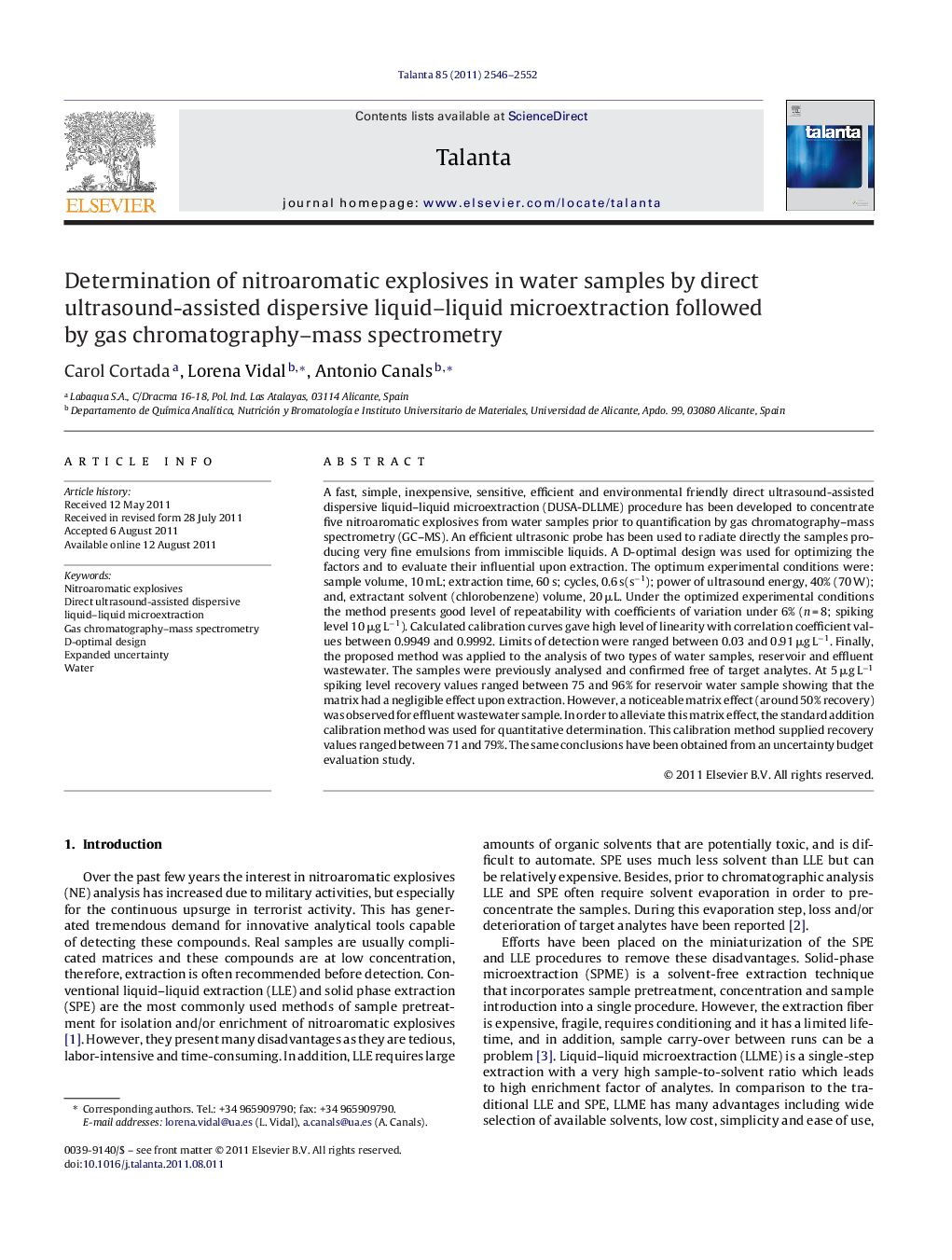| کد مقاله | کد نشریه | سال انتشار | مقاله انگلیسی | نسخه تمام متن |
|---|---|---|---|---|
| 10559707 | 969665 | 2011 | 7 صفحه PDF | دانلود رایگان |
عنوان انگلیسی مقاله ISI
Determination of nitroaromatic explosives in water samples by direct ultrasound-assisted dispersive liquid-liquid microextraction followed by gas chromatography-mass spectrometry
دانلود مقاله + سفارش ترجمه
دانلود مقاله ISI انگلیسی
رایگان برای ایرانیان
کلمات کلیدی
موضوعات مرتبط
مهندسی و علوم پایه
شیمی
شیمی آنالیزی یا شیمی تجزیه
پیش نمایش صفحه اول مقاله

چکیده انگلیسی
A fast, simple, inexpensive, sensitive, efficient and environmental friendly direct ultrasound-assisted dispersive liquid-liquid microextraction (DUSA-DLLME) procedure has been developed to concentrate five nitroaromatic explosives from water samples prior to quantification by gas chromatography-mass spectrometry (GC-MS). An efficient ultrasonic probe has been used to radiate directly the samples producing very fine emulsions from immiscible liquids. A D-optimal design was used for optimizing the factors and to evaluate their influential upon extraction. The optimum experimental conditions were: sample volume, 10 mL; extraction time, 60 s; cycles, 0.6 s(sâ1); power of ultrasound energy, 40% (70 W); and, extractant solvent (chlorobenzene) volume, 20 μL. Under the optimized experimental conditions the method presents good level of repeatability with coefficients of variation under 6% (n = 8; spiking level 10 μg Lâ1). Calculated calibration curves gave high level of linearity with correlation coefficient values between 0.9949 and 0.9992. Limits of detection were ranged between 0.03 and 0.91 μg Lâ1. Finally, the proposed method was applied to the analysis of two types of water samples, reservoir and effluent wastewater. The samples were previously analysed and confirmed free of target analytes. At 5 μg Lâ1 spiking level recovery values ranged between 75 and 96% for reservoir water sample showing that the matrix had a negligible effect upon extraction. However, a noticeable matrix effect (around 50% recovery) was observed for effluent wastewater sample. In order to alleviate this matrix effect, the standard addition calibration method was used for quantitative determination. This calibration method supplied recovery values ranged between 71 and 79%. The same conclusions have been obtained from an uncertainty budget evaluation study.
ناشر
Database: Elsevier - ScienceDirect (ساینس دایرکت)
Journal: Talanta - Volume 85, Issue 5, 15 October 2011, Pages 2546-2552
Journal: Talanta - Volume 85, Issue 5, 15 October 2011, Pages 2546-2552
نویسندگان
Carol Cortada, Lorena Vidal, Antonio Canals,